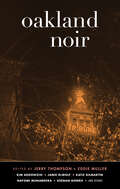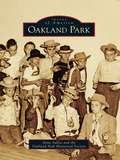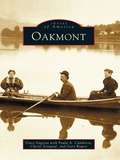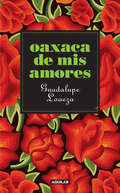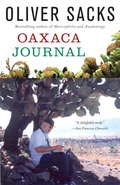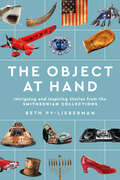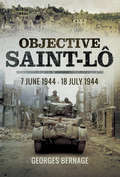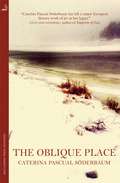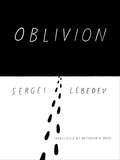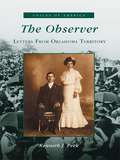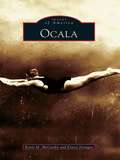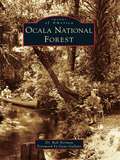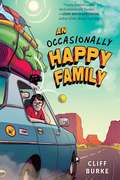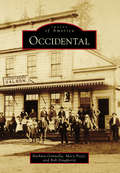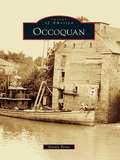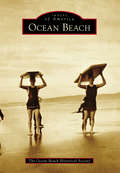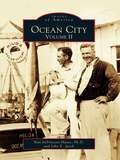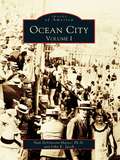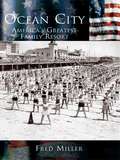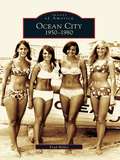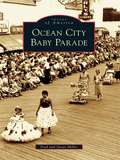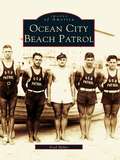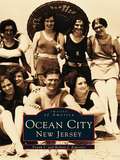- Table View
- List View
Oakland Noir (Akashic Noir)
by Nick Petrulakis Kim Addonizio Keenan Norris Keri Miki-Lani Schroeder Katie Gilmartin Dorothy Lazard Harry Louis Williams II Carolyn Alexander Phil Canalin Judy Juanita Jamie DeWolf Nayomi Munaweera Mahmud Rahman Tom McElravey Joe Loya Eddie Muller"Wonderfully, in Akashic's Oakland Noir, the stereotypes about the city suffer the fate of your average noir character--they die brutally. Kudos to the editors, Jerry Thompson and Eddie Muller, for getting Oakland right. All those outsize statistics don’t reveal a real city, but this collection of local voices--both established and new--brings it thrumming to life...Readers who know the city will relish its sense of place, and those who only know the stereotypes will be in for a pleasing eye-opener.”--San Francisco Chronicle“From the Oakland hills to the heart of downtown, each story brings Oakland to life."--The Mercury News“Oakland is a natural for the series, with its shadowy crimes and disgruntled cops.”--Zoom Street Magazine"San Francisco's grittier next-door neighbor gets her day in the sun in 16 new stories in this tightly curated entry in Akashic's Noir series. The hardscrabble streets of Oakland offer crime aplenty...Thompson and Muller have taken such pains to choose stories highlighting Oakland's diversity and history that the result is a volume rich in local culture as well as crime."--Kirkus Reviews"The legendarily tough California city of Oakland finally gets an entry in the Akashic noir series."--Publishers WeeklyBrand-new stories by: Nick Petrulakis, Kim Addonizio, Keenan Norris, Keri Miki-Lani Schroeder, Katie Gilmartin, Dorothy Lazard, Harry Louis Williams II, Carolyn Alexander, Phil Canalin, Judy Juanita, Jamie DeWolf, Nayomi Munaweera, Mahmud Rahman, Tom McElravey, Joe Loya, and Eddie Muller.In the wake of San Francisco Noir, Los Angeles Noir, and Orange County Noir--all popular volumes in the Akashic Noir Series--comes the latest California installment, Oakland Noir. Masterfully curated by Jerry Thompson and Eddie Muller (the "Czar of Noir"), this volume will shock, titillate, provoke, and entertain. The diverse cast of talented contributors will not disappoint.From the introduction:Jerry Thompson: Discovering the wang-dang-doodle jams of the Pointer Sisters shifted my entire focus. Stunning black women were scatting and bebopping all the way into my soul. I think what we've put together in Oakland Noir is a volume where this city is a character in every story. He's a slick brother strutting over a bacon-grease bass line and tambourine duet. She's a white chick with a bucket of hot muffins heading to farmer and flea markets, to sell crafts and get hooked up with some fine kat with dreadlocks and a criminal record. And it's in the faces of young fearless muthafuckers pounding keyboards and snapping fingers, lips, Snapchats, and Facebook timelines. It's the core of not only Black Lives Matter but all lives matter. We are the children of fantasy and of the funk...Eddie Muller: These days, writers and readers aren't denying the darker parts of our existence as much as they used to, especially in crime fiction. Some writers just do it for fun, because it's become the fashionable way to get published. You know, "gritty violence" and all that bullshit. The genuine darkness in noir stories comes from two places--the cruelty of the world's innate indifference, and the cruelty that people foster within themselves. If you're not seriously dealing with one, the other, or both, then you're not really writing noir.
Oakland Park
by Oakland Park Historical Society Anne SalleeOakland Park was named for the massive stand of trees that lined the Middle River. Our first permanent settlers were the Whidby family, who came from Georgia to South Florida in 1901, when the area was known as Colahatchee. By 1918, other farming families had moved into the area, and bean and pepper fields were abundant. In 1923, a Miami development company initiated the Oakland Park subdivision with one of the biggest barbecues ever held in Broward County, with an estimated attendance of 5,000 people from Dade, Broward, and Palm Beach Counties. The city was incorporated first as Floranada in early 1925 by the American-British Improvement Company, a group of international investors. Plans for the resort included two 18-hole golf courses, a polo field, an aviation field, tennis courts, and a yacht club. It was intended to rival Palm Beach, but this vision was carried away with hurricane winds on September 18, 1926. Bankruptcy and devastating damage brought the development to an end. Despite offers from Fort Lauderdale and Pompano Beach, the citizens of Oakland Park agreed that the community could be run more efficiently as an independent city. The city was reorganized and reincorporated as Oakland Park on July 1, 1929.
Oakmont
by Cheryl Zentgraf Gary Rogers Vince Gagetta Paula A. CalabreseLong before the Hulton Bridge, Hulton's Ferry carried locals across the Allegheny River to the road to Pittsburgh and the world beyond. The ferry helped transform a sparsely populated outpost in the early 1800s into a thriving settlement a few decades later and thus earns recognition as the first bookmark in the history of Oakmont. Others followed: the Allegheny Valley Railroad; a lake that covered part of what now is one of the town's busiest streets; Civil War and World War I army encampments; the Willows nightclub and its huge swimming pool; and boat clubs, yacht clubs, and a world-famous country club. Oakmont captures the history of these places and times-along with many others-through nearly two hundred vintage photographs.
The Oatmeal Ark: Across Canada by Water
by Rory MacleanThe Oatmeal Ark weaves invention through true stories, stitches imaginary characters into real events. It is at once a history and a fiction. It tries to reach beyond our tradition of realistic literature, building on the strengths of Susanna Moodie, the Canadian Vegetable and the NFB documentary, and to reassert the older mythical dimensions of the land. In my writing I strive to cross the line beyond which fact becomes myth to find a truth that is made sharper in fiction. The Oatmeal Ark is a subjective, heartfelt look at Canada, its history and the courageous men and women of all nationalities who struggled -- and struggle still -- to build this country.
Oaxaca de mis amores
by Guadalupe LoaezaOaxaca is one of the states with the most tradition in Mexico. Fascinated by its colors, its flavors, its traditions, and its people, Guadalupe Loaeza, with her agile, entertaining, and refreshing style, shows us this magic state and immerses us in a blend of culture and tradition so that we can get to know the heart of Juana, the last days of Don Porfirio, and a gigantic Juárez.
Oaxaca Journal
by Oliver SacksSince childhood, Oliver Sacks has been fascinated by ferns: an ancient class of plants able to survive and adapt in many climates. Along with a delightful group of fellow fern aficionados--mathematicians, poets, artists, and assorted botanists and birders--he embarks on an exploration of Southern Mexico, a region that is also rich in human history and culture. He muses on the origins of chocolate and mescal, pre-Columbian culture and hallucinogens, the vibrant sights and sounds of the marketplace, and the peculiar passions of botanists. What other species would comb ancient Zapotec ruins on their hands and knees, searching for a new type of fern? Combining Sacks's enthusiasm for natural history and the richness of humanity with his sharp and observant eye for detail, Oaxaca Journal is a rare treat.
The Object at Hand: Intriguing and Inspiring Stories from the Smithsonian Collections
by Beth Py-LiebermanFrom Dorothy's ruby slippers to a speech that saved Teddy Roosevelt from assassination, this authoritative guide delivers in-depth reportage on the history of remarkable objects from the Smithsonian's collectionsFor American history, pop culture, and museum enthusiastsWith charm and exuberance, The Object at Hand presents a behind-the-scenes vantage point of the Smithsonian collections. Veteran Smithsonian magazine editor Beth Py-Lieberman weaves together adaptations of the magazine's extensive and compelling coverage and interviews with scholars, curators, and historians to take readers on an unforgettable journey through the Smithsonian museums.Objects are grouped into the themes audacity, utopia, fierce, haunting, deception, lost, desire, triumph, scale, optimism, playful, rhythm, and revealing to engage with the emotional dimensions of each object, how they relate to each other, and how they fit into the larger American story. A sampling includes: The Star-Spangled Banner Frida Kahlo's love letter to Diego RiveraAmelia Earhart's Lockheed Vega 5BNat Turner's BibleAn AIDS quilt panel honoring Roger Gail LyonA signpost from the Standing Rock protest A glass-plate portrait of Abraham Lincoln Life-sized model of a MegalodonThe Hope DiamondChuck Berry's CadillacPortrait of Henrietta LacksPy-Lieberman reflects on the profound connections between even outwardly dissimilar objects, and offers insight and stories from Smithsonian experts. The book explores artworks, scientific specimens, historical artifacts, airplanes, spacecraft, plants, and so much more, contemplating how each item represents different facets of humanity and resonates with cultural meaning in surprising ways. Whimsical, affecting, and insightful, The Object at Hand offers an intimate and exclusive tour of the Smithsonian collections.
Objective Saint-Lô: 7 June 1944–18 July 1944
by Georges Bernage&“A collection of eyewitness accounts of the heavy fighting that took place in this part of France after the Omaha landings . . . excellent and gripping.&”—FSAddon This book provides a day-by-day account of the forty-two days of fighting from Omaha Beach to Saint-Lô. Follow Lt. Allsup from the beaches at Hill 108 (the &“bloody hill&”), where he was injured, and Lt. Jones, who was among the first to enter Saint-Lô; a town destroyed by bombs, which was to become the graveyard of hundreds of Normans. On the opposing side, discover the fate of the fearsome &“green devil&” paratroopers of General Schimpf and follow in the footsteps of paratroopers Erwin Schmieger and Rudi Frühbeisser, as they defend their armed camp, ensuring that every hedge will only be taken at the highest price. Objective Saint-Lô takes the reader along the little or unknown routes from the horrors of Omaha Beach to Trvires, La Cambe, Isigny, through the Aure valley to Hill 108, (&“Purple Heart Hill&”) and Hills 192 and 122. As well as authentic eyewitness testimony, the book also acts as a field guide, including maps and both contemporary and modern photographs. &“Lavishly illustrated with sketch maps, then and now images and numerous personal accounts from US and German sources, this is an excellent campaign overview, ideal for tour planning.&”—Guild of Battlefield Guides &“An exciting story with insights from those who were there and an amazing collection of photographs, drawing and maps—Highly Recommended.&”—Firetrench
The Oblique Place (MacLehose Press Editions #14)
by Caterina Pascual Söderbaum"Caterina Pascual Söderbaum has left a major European literary work of art as her legacy" STEVE SEM-SANDBERG, author of Emperor of LiesThe Oblique Place is a captivating journey of the imagination, a prize-winning novel that probes the ruinous legacies of Fascist Europe in the twentieth century.The discovery of photographs in an album - of her Spanish grandfather who joined Hitler's Wehrmacht and her father in the uniform of Franco's army- leads Caterina Pascual Söderbaum to explore her family's links to some of the most abhorrent passages of twentieth-century history. Her mother turns out to be related to Kristina Söderbaum, a celebrated Swedish film star of the Third Reich, adored by Goebbels.She travels with husband and child to the shores of the idyllic Attersee in Austria, where the officers of the extermination camps spent their holidays. The journey continues from Schloss Hartheim, where the staff of the Nazi euthanasia programme forgot, with the help of alcohol and sex, the horrors that took place there, to the Villa Saint-Jean, where malnourished children from France's internment camps were sent to recover. This imaginative rediscovery of her own family's disturbing history is fused with vividly captured episodes from other lives and times, and the threads of evil that she lays bare are described in language so beautiful, so subtle and painterly, that her odyssey is at once shattering and mesmerising.Translated from the Swedish by Frank Perry
The Oblique Place
by Caterina Pascual Söderbaum"Caterina Pascual Söderbaum has left a major European literary work of art as her legacy" STEVE SEM-SANDBERG, author of Emperor of LiesThe Oblique Place is a captivating journey of the imagination, a prize-winning novel that probes the ruinous legacies of Fascist Europe in the twentieth century.The discovery of photographs in an album - of her Spanish grandfather who joined Hitler's Wehrmacht and her father in the uniform of Franco's army- leads Caterina Pascual Söderbaum to explore her family's links to some of the most abhorrent passages of twentieth-century history. Her mother turns out to be related to Kristina Söderbaum, a celebrated Swedish film star of the Third Reich, adored by Goebbels.She travels with husband and child to the shores of the idyllic Attersee in Austria, where the officers of the extermination camps spent their holidays. The journey continues from Schloss Hartheim, where the staff of the Nazi euthanasia programme forgot, with the help of alcohol and sex, the horrors that took place there, to the Villa Saint-Jean, where malnourished children from France's internment camps were sent to recover. This imaginative rediscovery of her own family's disturbing history is fused with vividly captured episodes from other lives and times, and the threads of evil that she lays bare are described in language so beautiful, so subtle and painterly, that her odyssey is at once shattering and mesmerising.Translated from the Swedish by Frank Perry
Oblivion
by Antonina W. Bouis Sergei Lebedev"Opening in stately fashion and unfolding ever faster with fierce, intensive elegance, this first novel discloses the weight of Soviet history and its consequences. ... Highly recommended for anyone serious about literature or history."--Library Journal (Starred review)"Packs a wicked emotional punch through fierce poetic imagery ... Lebedev takes his place beside Solzhenitsyn and other great writers who have refused to abide by silence ... Courageous and devastating."--Kirkus Reviews (Starred review)"An important book about where Russia is today, with poetic descriptions and unforgettable images evoking that nation's often elusive attempts to understand its dark past. I stand in awe of both the author and translator."--Jack F. Matlock, Jr, former US Ambassador to the Soviet Union "The subject matter of Oblivion is the eerie frozen landscape scattered with the human detritus of an inhuman bygone era. What brings it back from oblivion is the author's exceptional power of language. A haunting read."--Michael Zantovsky, former press secretary to Czech President Vaclav Havel, author of Havel: A Life and former Czech Ambassador to the United States, Israel and Britain"Beautifully written, haunting and unputdownable. A masterpiece novel which relates the horrors of Russia's unburied Soviet past through the eyes of a man revisiting--and filling in the gaps in--his half-understood childhood." --Edward Lucas, senior editor, The Economist and author of The New Cold War: Putin's Russia and the Threat to the West"Sergei Lebedev's debut novel is a haunting tale about the loss of national memory and its moral consequences for the individual. The brilliant translation by Antonina W. Bouis captures the evocative beauty of the poetic first-person narration and renders it into memorable English."--Solomon Volkov, author of Shostakovich and Stalin, St. Petersburg: A Cultural History, and The Magical Chorus: A History of Russian Culture from Tolstoy to Solzhenitsyn"An extraordinary book that takes readers across Russia's desolate northern landscape and turns up secrets about the terrible legacy of the Soviet gulags, described through evocative, often poetic portraits of people and places."--Celestine Bohlen, International New York Times columnist and former Moscow correspondent for The New York Times"A monomaniacal meditation on memory and forgetting, presence and emptiness ... Lebedev's magnificent novel has the potency to become a mirror and wake-up call to a Russia that is blind to history."--Neue Zürcher Zeitung"Sergei Lebedev opens up new territory in literature. Lebedev's prose lives from the precise images and the author's colossal gift of observation."--Der Spiegel"The beauty of the language is almost impossible to bear."--Frankfurter Allgemeine ZeitungIn one of the first twenty-first century Russian novels to probe the legacy of the Soviet prison camp system, a young man travels to the vast wastelands of the Far North to uncover the truth about a shadowy neighbor who saved his life, and whom he knows only as Grandfather II. What he finds, among the forgotten mines and decrepit barracks of former gulags, is a world relegated to oblivion, where it is easier to ignore both the victims and the executioners than to come to terms with a terrible past. This disturbing tale evokes the great and ruined beauty of a land where man and machine worked in tandem with nature to destroy millions of lives during the Soviet century. Emerging from today's Russia, where the ills of the past are being forcefully erased from public memory, this masterful novel represents an epic literary attempt to rescue history from the brink of oblivion.Sergei Lebedev was born in Moscow in 1981 and worked for seven years on geological expeditions in northern Russia and Central Asia. His first novel, Oblivion, has been translated into many languages.
Observer, Letters from Oklahoma Territory, The
by Kenneth J. PeekR.H. Wessel was the owner, editor, and publisher of the Frederick Enterprise / Frederick Press, and a leading citizen from the day he first came to Frederick, Oklahoma, in 1902 until his death in 1956. He is best known for his column "The Observer," for which this book is titled. He left behind a considerable legacy of his adventurous life through letters, photographs, documents, and historic files. His experiences in Lawton during the 1901 Land Lottery and the following homestead years in Frederick are covered in this book.As a newspaperman, with a love for telling a story, his letters are an incredible documentation of life on the Oklahoma frontier, as well as his love story by mail with Margaret Scow, the bride he brought to Oklahoma after "proving up" on his homestead and obtaining his own newspaper.
Ocala
by Kevin M. Mccarthy Ernest JerniganNearly five centuries have passed since Ponce de Leon claimed for the king of Spain the area that now contains Ocala, the seat of Marion County in North Central Florida. Located midway between the Atlantic Ocean and the Gulf of Mexico, Ocala was incorporated in 1885, when it was home to just 803 inhabitants, and has grown steadily since that time. At the turn of the twentieth century, the city covered four square miles and had a population of 3,380, making Ocala the seventh largest town in Florida. From its Native American heritage, which includes important episodes in the life of Seminole leader Osceola, to its natural beauty featured in such places as the Ocala National Forest and the world-famous Silver Springs, Ocala has had a rich and fascinating past. Widely known today as champion thoroughbred horse country, Ocala and its environs also boast neighborhoods of well-preserved Victorian homes and other historic structures, a thriving business community, and a diverse populace that is dedicated to the constant improvement of this singular city. In 1995, Ocala was honored with the designation of "All America City" by the National Civic League. Paying tribute to this one-of-a-kind city, its residents--both past and present--and the story it has to tell, this volume of more than 200 vintage images showcases Ocala's rich historical legacy and the men and women who made it all possible.
Ocala National Forest (Images of America)
by Dr Rob Norman Gene GallantThe Ocala National Forest, founded on November 24, 1908, by Pres. Theodore Roosevelt, is the oldest national forest in the eastern continental United States. The forest is one of Central Florida's last remaining expanses of forested lands with magnificent palms, towering live oaks, and the largest sand pine scrub population in the world. The Ocala National Forest contains major springs, including Salt Springs, Silver Glen, Alexander, and Juniper Run. In addition to several wilderness areas for visitors seeking primitive conditions and solitude, the forest has visitor centers, nature trails, and a section of the Florida Trail. Images of America: Ocala National Forest is filled with fascinating stories and exciting facts on the history of the steamboats, logging, trails, movie sets (including The Yearling, based on the Pulitzer Prize-winning novel by Marjorie Kinnan Rawlings), Cracker cowboys, modern conservation efforts, and more.
An Occasionally Happy Family
by Cliff BurkeGordon Korman meets The Great Outdoors in this funny and moving debut about a boy who goes on a disastrous family vacation (sweltering heat! bear chases!) that ends with a terrible surprise: his dad's new girlfriend.There are zero reasons for Theo Ripley to look forward to his family vacation. Not only are he, sister Laura, and nature-obsessed Dad going to Big Bend, the least popular National Park, but once there, the family will be camping. And Theo is an indoor animal. It doesn&’t help that this will be the first vacation they&’re taking since Mom passed away. Once there, the family contends with 110 degree days, wild bears, and an annoying amateur ornithologist and his awful teenage vlogger son. Then, Theo&’s dad hits him with a whopper of a surprise: the whole trip is just a trick to introduce his secret new girlfriend. Theo tries to squash down the pain in his chest. But when it becomes clear that this is an auditioning-to-be-his-stepmom girlfriend, Theo must find a way to face his grief and talk to his dad before his family is forever changed.
Occidental (Images of America)
by Bob Dougherty Mary Pozzi Barbara GonnellaOccidental is a picturesque village in West Sonoma County nestled between the Salmon Creek and Dutch Bill Creek watersheds. William "Dutch Bill" Howard is considered the first permanent European settler in 1849, but he was not Dutch, and his name was not Bill--he was actually Danish and had assumed a new identity after deserting a ship to look for gold. Howard and another early settler, logging baron "Boss" Meeker, were instrumental in shaping early Occidental. The North Pacific Coast Railroad arrived in 1876, requiring construction of the country's tallest timber bridge. The railroad allowed much faster communication and transportation of people and goods, including redwood, charcoal, tanbark, and produce. Italians also started arriving in the 1870s, opening authentic Italian restaurants that have now served generations of families. In the 1970s, a culture clash occurred between ranchers and farmers with hippies and artists, but together they fought to maintain the beauty and character of Occidental.
Occoquan
by Earnie PortaAlthough Native Americans have lived along the banks of the Occoquan for thousands of years, John Smith was the first European to visit the area, arriving at the river's mouth in 1608. Here he encountered the Dogue Indians, from whose language the river and town take their names. With the coming of settlers, Occoquan's location at the meeting of the Tidewater and Piedmont made it ideal for water-related industry and commerce. By the end of the 18th century, it boasted one of the first automated gristmills in the nation. During the Civil War, Occoquan housed both Union and Confederate troops and was the sight of several small engagements. In 1972, the river, which had provided so many commercial and recreational benefits, revealed a more dangerous side as flooding from Hurricane Agnes caused severe damage. The people of Occoquan rebuilt, and the town evolved into the wonderful mixture of old and new that gives it the unique character seen today.
Ocean Beach
by Ocean Beach Historical SocietyOcean Beach, a neighborhood of San Diego, California, is known throughout the city, county, and beyond as a unique and quirky place with the feel of a small town, despite being a stone's throw from the center of a major metropolis. Founded in 1887 in a coastal area known for its beautiful cliffs and rock formations, Ocean Beach went through growing pains in the early 1900s before establishing itself as a family-oriented, self-contained beach community by the mid-1930s. Full of mom-and-pop stores and very walkable, Ocean Beach is a favorite destination for thousands of tourists and San Diegans each year.
Ocean City: Volume II (Images of America)
by Ph. D. Nan Devincent-Hayes John E. JacobOcean City, Maryland's own seaside resort, has become so popular that it is almost too small--five square miles--to hold all its tourists. The last few decades have brought tremendous growth to the area in the form of both population and development. Bridges and tunnels have been built, high-rise hotels and condominiums have grown up, and amusements of all kinds have become available to the summertime crowds. In this second volume of Ocean City, images of beach life from the late 1940s to the present day capture the spirit of this popular vacation spot. From funnel cakes to Ferris wheels and deep-sea fishing to seasonal festivals, Ocean City, now a year-round retreat, has offered millions of visitors an endless variety of entertainment. Having survived destruction caused by storms, problems associated with the real estate boom, and the overwhelming surge of visitors who each summer crowd the boardwalk and Coastal Highway, this "small" town has matured over the last few decades into the jewel of Maryland's shore.
Ocean City: Volume I (Images of America)
by Ph. D. Nan Devincent-Hayes John E. JacobOriginally the land of the Algonquian people, the barrier island on which Ocean City is now located, served as a protective wall for the mainland Delmarva peninsula. It was a somewhat remote area until five men, having formed the Atlantic Hotel Company Corporation, built the first lodging facility, and Ocean City as a coastal resort began to take root. From the cattle grazing in the mid-1800s to the few blocks of buildings constructed at the turn of the century, from the infamous storm of 1933 to the overwhelming growth of the 1940s, Ocean City has had a rich and vibrant history. This volume offers a historical perspective of Ocean City from its inception to 1946, a period when growth was steady but slow. Now boasting over eight million visitors annually, the area is Maryland's golden-haired child and its second-largest city during peak summer weekends when an average of 300,000 tourists arrive.
Ocean City: America's Greatest Family Resort
by Fred MillerNestled along the New Jersey coastline and built to be one of the original seaside tourist destinations, Ocean City still sets the standard for resort living along the mid-Atlantic. What was once a whale-processing center in the 1700s emerged as a destination for sun and fun by drawing the biggest names and the classic American families of the early twentieth century. As our country's search for the ideal vacation grew, this 7-mile stretch of beach cultivated a rich history and a reputation as one of the most alluring communities on the East Coast.
Ocean City: 1950-1980 (Images of America)
by Fred MillerOcean City: 1950-1980 illustrates the growth and change of this seashore community founded in 1879 by a group of Methodist ministers. The venture was an immediate success, and the area quickly grew into a prosperous year-round community and a bustling summer resort. The Great Depression and World War II slowed this development, but by the beginning of the 1950s, the burgeoning economy and optimism in the country again encouraged people to enjoy family vacations. With the wide beaches, scenic boardwalk, three new major highways, and comfortable family atmosphere, Ocean City became a superb family destination.
Ocean City Baby Parade
by Fred Miller Susan MillerThe Ocean City Baby Parade is the longest continuously held baby parade in the nation, tracing back to August 10, 1901, when the city's first baby show was held. From its beginning with 46 babies in the prettiest, cutest, and fattest baby categories, it has grown into a boardwalk extravaganza with 300 entrants, bands and bugle corps, professionally decorated commercial floats, homemade baby floats, grand marshals, and cartoon characters. Many families plan their vacations around this well-known event, and they are among the thousands of spectators lining the boardwalk each year.
Ocean City Beach Patrol (Images of America)
by Fred MillerOcean City Beach Patrol is the story of the elite group of men and women who serve as guards along the sandy beaches and gently rolling surf of Ocean City, an eight-mile-long barrier island off the coast of southern New Jersey. Although the coastline slopes gradually into the sea and the water is generally calm, deadly rip currents and strong undertows can occur at any time. Thus, the lifeguards often risk their lives to protect the thousands of bathers enjoying these waters each summer.
Ocean City, New Jersey (Images of America)
by Frank J. Esposito Robert J. EspositoOcean City, which calls itself "America's Greatest Family Resort," is today best known for its wide, clean beaches and a yearly bayfront celebration called the "Night in Venice." Founded in 1879 as a Christian seaside resort, the island community still maintains some of its early traditions including prohibiting the sale of alcoholic beverages--while striving to continue its long-standing reputation as a family-oriented resort. This remarkable new photographic history features such historic sites as the home of the town's firstresident and famous old-time restaurants like Chris', Hogate's, and Watson's. Several rare pictures of the shipwrecked Sindia and its cargo are also included, as well as photographs of Ocean City's most well-known citizens, Princess Grace Kelly and author Gay Talese.
